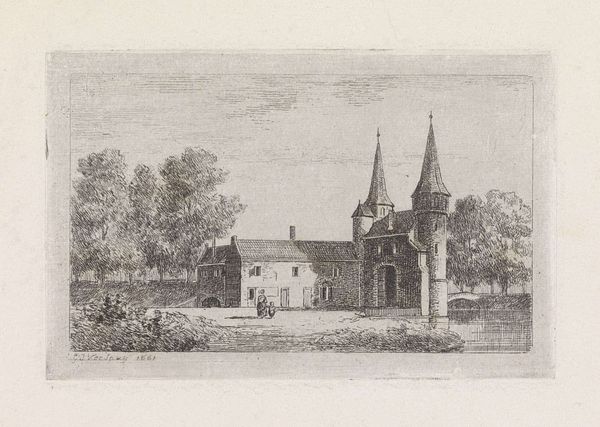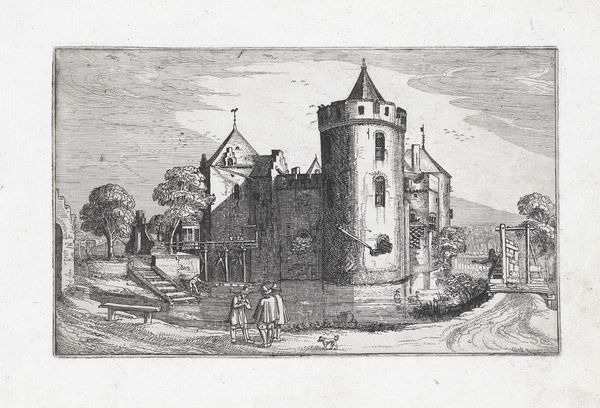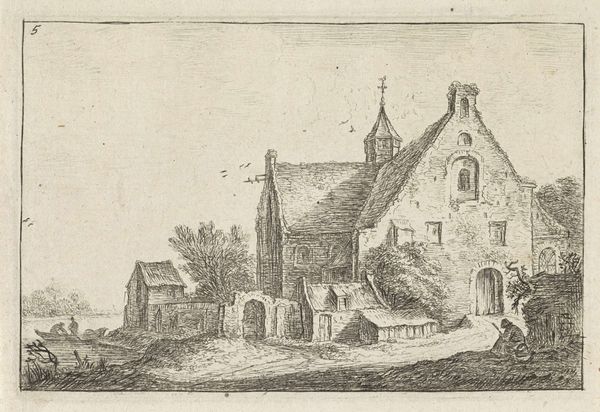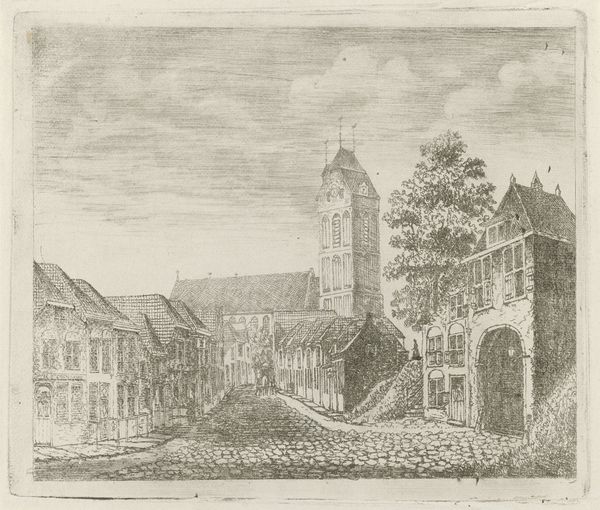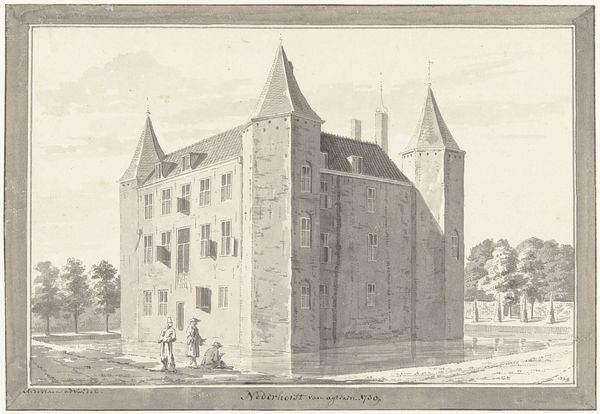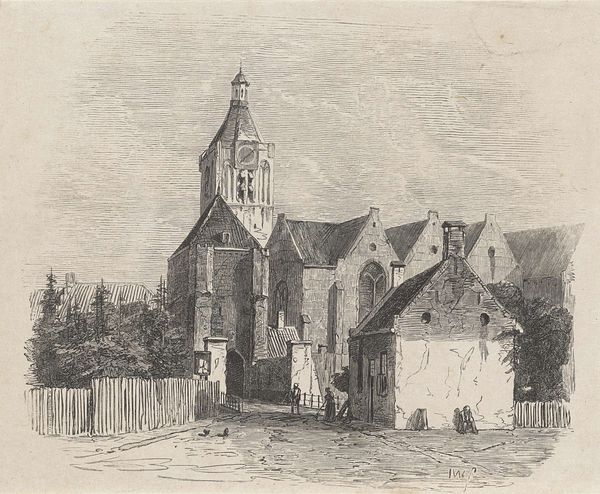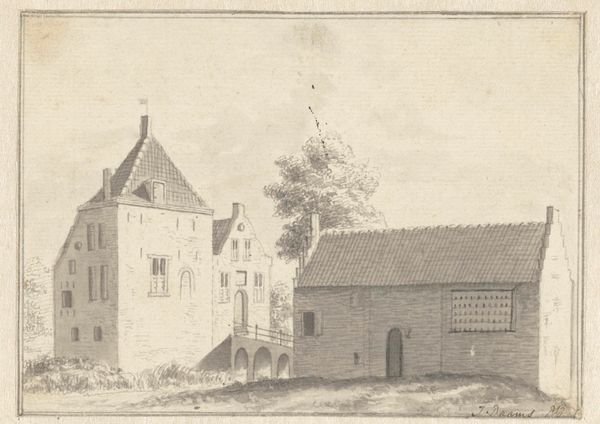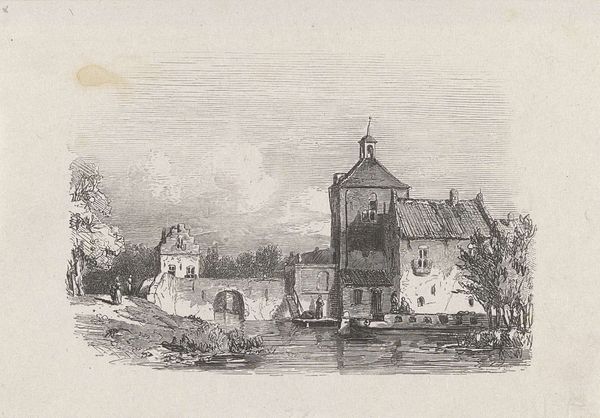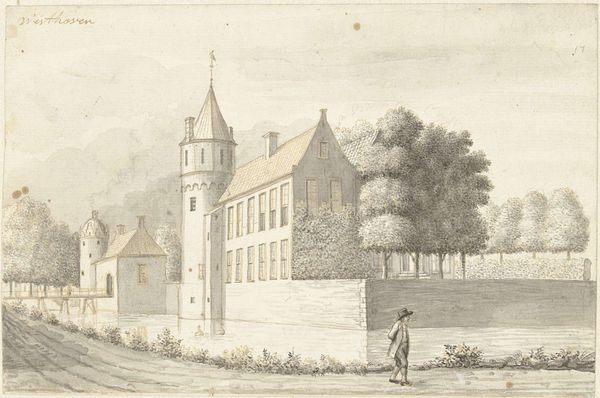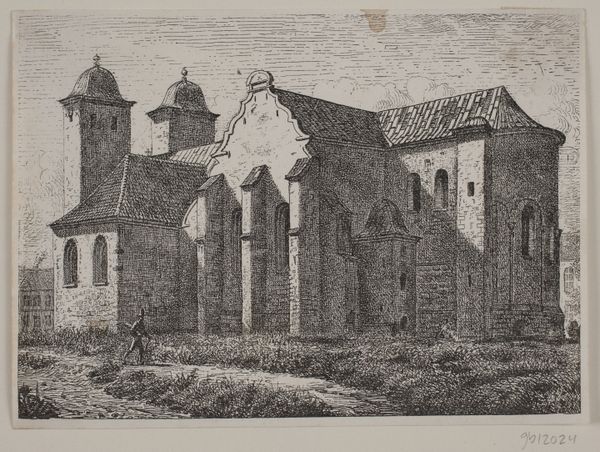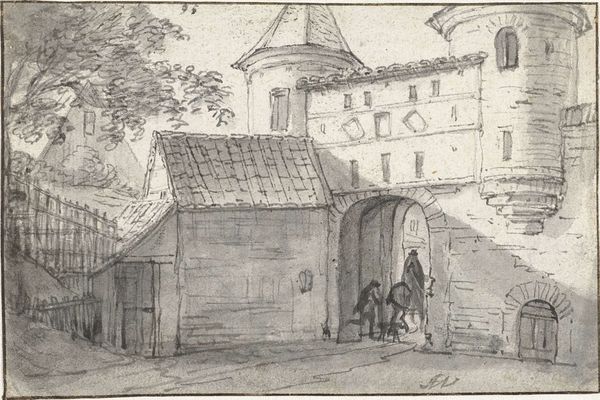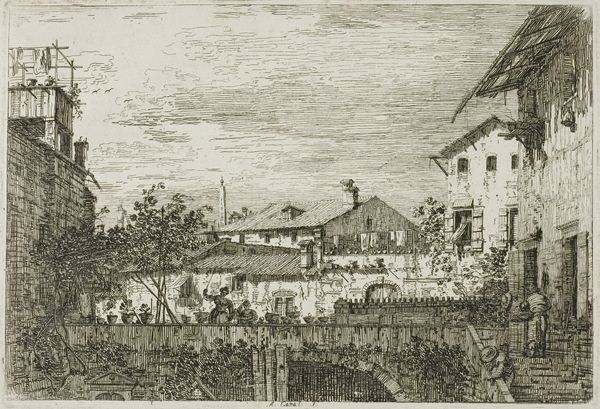
Dimensions: height 122 mm, width 172 mm
Copyright: Rijks Museum: Open Domain
Curator: Standing here, we’re observing Isaac Weissenbruch’s "View of a Castle by the Water," believed to have been created sometime between 1836 and 1912. Editor: The delicacy of the lines immediately grabs my attention. It feels almost ethereal, a fleeting impression captured with minimal strokes. The tonality creates a subdued atmosphere, a quiet moment in time. Curator: Weissenbruch, a prominent figure in the Hague School, often depicted Dutch landscapes. However, it's important to see this as more than a literal representation. Consider the social role castles played, these imposing structures embodying power and aristocracy. Editor: But observe how the artist simplifies the castle’s architecture! He deconstructs it into basic geometric forms: cones of the towers, rectangular blocks of the structure itself. It feels as though Weissenbruch is reducing its inherent power down to these basic shapes. Curator: True, but perhaps Weissenbruch’s romantic leanings guide his hand. The decaying structure in the drawing, along with the humble figures on the bank, speak volumes about societal change and the decline of aristocratic power structures in Dutch society at the time. Editor: The roughness and the lack of detail in the sketch emphasize the raw character of the building, stripped of pretense, presented as an open form. The textures he coaxes from such a simple medium—paper, ink, etching, give so much information to the overall structure! Curator: Think about it as a broader cultural context. This was a period of immense social and political upheaval. Artists like Weissenbruch engaged with those shifting powers through their depictions of the existing order. Editor: Yes. I get the socio-historical value for that, and it is useful to be reminded that. I was going to say how brilliant his arrangement of dark and light areas emphasizes depth and evokes that wonderful atmosphere, even though, really, it is not much more than a set of jottings on aged paper. Curator: By considering the historic context, we view not just a castle, but also Weissenbruch’s artistic engagement with societal evolution. It allows us a powerful window into his worldview. Editor: And for me, it provides such an intimate study in contrasts that the artist found along the river. It feels like such a peaceful world.
Comments
No comments
Be the first to comment and join the conversation on the ultimate creative platform.
